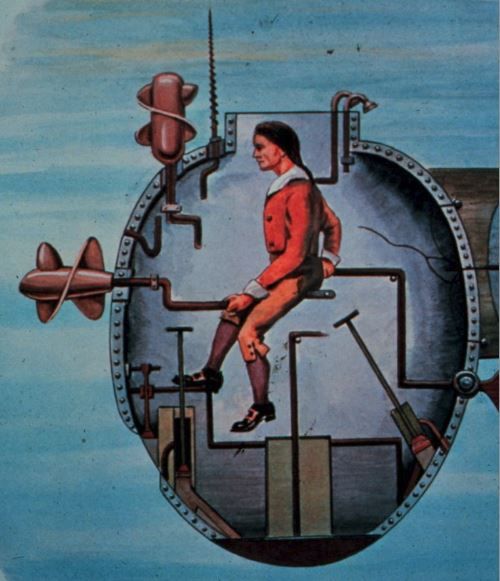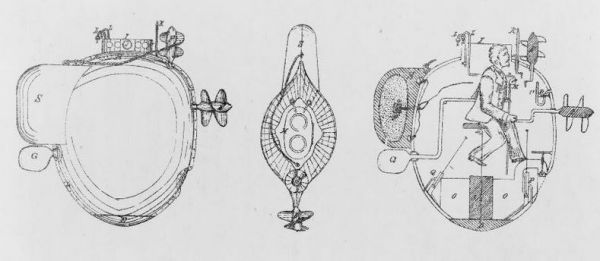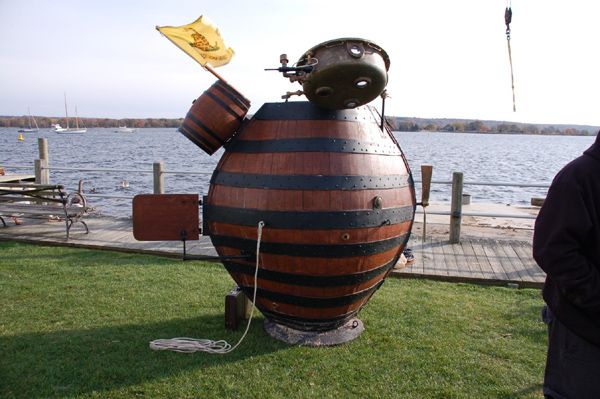

The pilot had enough air to keep breathing for half an hour. But he also had a snorkel that gave him access to fresh air when surfaced. It closed automatically when the vessel submerged.
The Turtle was equipped with a time bomb which could be detonated underwater—again, an invention that Bushnell devised. His plan was that the pilot of the submarine would drive a screw into the wooden hull of an enemy ship. The bomb would be attached to the screw. The pilot could then escape before the bomb detonated.

On the night of Sept. 6, 1776, an American ship towed the Turtle out into the harbor. Lee submerged the Turtle and proceeded to HMS Eagle, the British flagship. Lee tried to attach the bomb, but it would not connect to the hull of the Eagle. Eventually, he cut it loose. The bomb floated away and detonated in a huge but harmless explosion.
Bushnell tried two other times to use the Turtle, but these were also unsuccessful. On October 6, the British sank the American ship carrying the Turtle and the submarine never saw action again. The project was a failure, but it inspired the imaginations of military leaders. Reflecting on the project in 1785, Washington wrote in a letter to Thomas Jefferson that “I then thought, and still think, that it was an effort of genius.”
Bonus item: the first submarine to sink another vessel in combat was the Hunley, a submarine of the Confederate Navy.

No comments:
Post a Comment